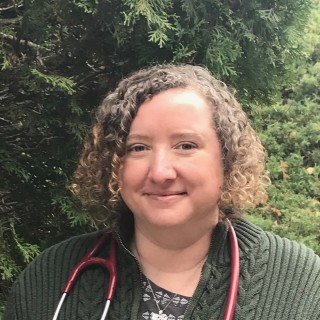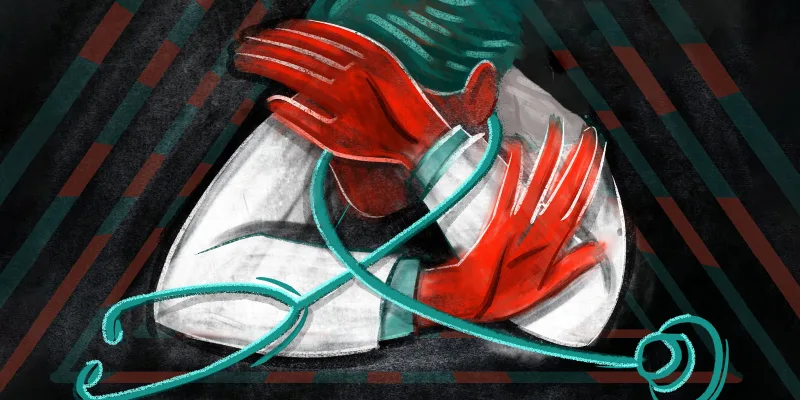
Since childhood, I have suffered from severe stabbing headaches. Then in my first year of medical school in anatomy, as we peeled back the scalp of our cadaver, I saw a nerve poking out of a muscle on the back of the skull. With a flash, I knew that I was seeing the source of my pain. But despite identifing it, it would be another five years before I was diagnosed with occipital neuralgia. Thus, my first lesson in pain management. Getting accurate, effective, pain treatment is a lengthy and difficult process. Throughout medical school, I learned about pain receptors and pathways, but little about how to treat pain. Most of my experience treating pain came bedside, from supervising residents who passed down what their senior residents passed down to them. On rounds, there were short snippets of advice from attendings. I recall only one lecture on pain treatment in all of residency. Board exams had little to no content on pain. Pain is a complex physical and psychological process and medical training shortchanges it. Yet, no one can dispute that pain can dictate or limit one’s activities and mood. In part due to the lack of training, it is no surprise then, that physicians I met as a patient were usually underprepared to work with chronic pain.
Unfortunately, several years into my career in pediatrics I learned more than I ever wanted to about pain. I developed shingles/zoster and then post-herpetic neuralgia (PHN) from the resulting nerve damage. I learned that my medical school training and residency were poor preparation for the journey ahead. Further, many of the “facts” about pain and its treatment that I learned bedside were incorrect. PHN is nerve pain, which is a tricky beast. Nothing really works well for it. I learned in school that NSAIDs, acetaminophen, and opiates all “don’t treat nerve pain.” But I have since learned that is simply incorrect. They all work in some people to a partial and variable degree, and for some there are intolerable side effects and risks. On the flip side, nerve pain agents such as tricyclic antidepressants and gabapentinoids, touted effective in medical school, also work to varying degrees in different people, but many cannot tolerate the side effects. In a discussion before a procedure with one of my pain physicians, I was told that if a treatment works to lower pain by 30% then it is successful. For a recent drug in the process of getting FDA approval the benchmark for success was only 20%. Interventional strategies have similar success rates but are only accessed at specialty centers and are out of the reach of many. Thus I have had to alter my expectations and learn that going from a pain score of 9 to a 6 is a “success.” I had to learn that moderately severe pain was better than super severe pain and that layering on different medications that each give 10-30% pain reduction until you finally reach a place that is livable is a daily titration.
In my journey with neuralgia, I also learned about complementary methods of pain control. All of these were discussed in training as a side note and mostly dismissed. For example, electrical stimulation in the form of transcutaneous electrical nerve stimulation makes a difference but few medical providers are knowledgeable enough about its use to prescribe therapy. Topicals such as menthol, methyl salicylate, and lidocaine help in a pain flare. Music is a welcome calming agent. Aromatherapy can help. Physical modalities such as physical therapy and massage help. Psychological therapies such as cognitive behavioral therapy and acceptance and commitment therapy can also reduce the experience of pain. Personally, skills learned from my pain psychologist have helped me more than any medication. Learning to live your life with pain that may not go away is difficult and a guide is invaluable. However, none of these interventions were ever mentioned in my medical training even though all of these methods have minimal side effects and most are available without a doctor's prescription.
Living life with chronic pain is a bit like being handcuffed to an unwelcome dance partner. Pain affects all aspects of daily life. Hoping to go out for dinner or celebrate a family event? You better hope your “dance partner” is up for it. Many an event that I have been invited to has been curtailed due to pain. I have had to accept partial events and partial participation and take joy in what I can experience and try not to mourn what I am not able to participate in. Pain has taken away some of my independence. Some days I cannot put on my own shoes. I cannot shop for groceries independently or go to events in big stadiums/arenas. An additional challenge is that this dance partner is invisible to others who at times cannot comprehend my limitations. I have had to accept my new limits. It wasn’t an easy process and I took the guidance of a trained pain psychologist.
Mindfulness, gratitude, and compassion all have played a big role in my healing from neuralgia as well. I had already started a mindfulness practice before the zoster, but it became more meaningful and important as I faced living with chronic pain. I began to see mentions of gratitude both in the pain community and the mindfulness community. I began chronicling my gratitude even on bad weeks and found it helpful to reflect on what is working rather than what was not. I also read up on compassion therapy and loving-kindness meditation, which circle around the same ideas - that we must treat ourselves with the same compassion and love that we treat our family and friends. Adopting attitudes of gratefulness and compassion has been vital in managing my life with pain.
Pain has taken many things from me. Accepting my limits and learning to live a life with pain that holds meaning and value is a daily journey. Acceptance and gratitude have helped me heal despite my physical pain level not really decreasing all that much. Overall this journey has been a re-education of a physician, now patient, in the lessons of pain.
Heather Finlay-Morreale, MD, is a board-certified primary care pediatrician working for Nashaway Pediatrics, a practice run by UMass Memorial in Sterling, Massachusetts. Her interests include mental health, mindfulness, and general well-being.







